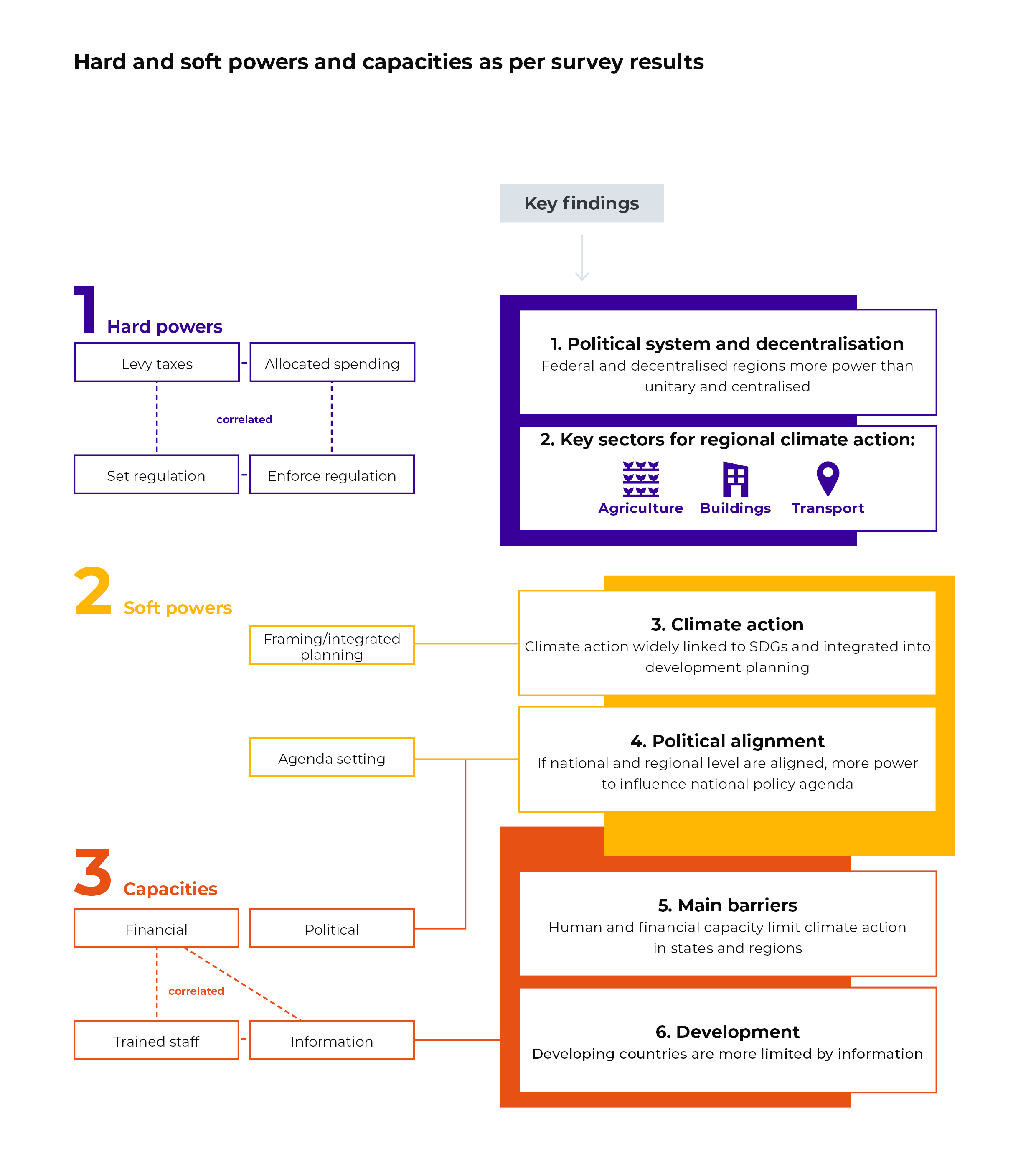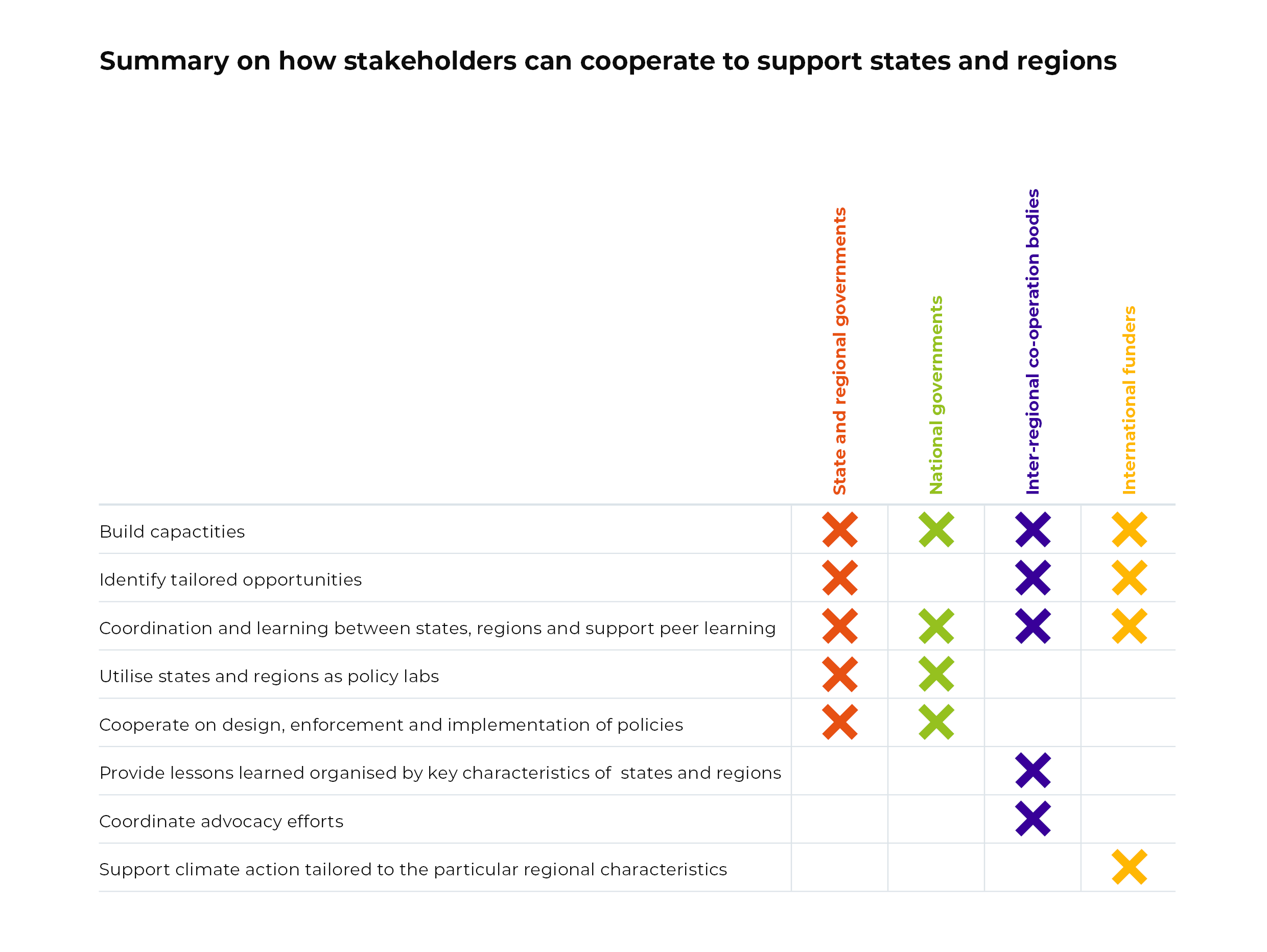The mitigation potential of states and regions is extremely big: The sum of all regions in the world almost add up to the global level, which makes regions fundamental for reaching net-zero globally. States and regions have been increasingly taping into this potential by significantly increasing their commitments to act on climate change in the last few years, thereby reinforcing or nudging additional national action. However, the powers regions have to act on these commitments and put forward new ones are still little understood to date.
This research used the framework for ‘power to act’ which considers financial and regulatory hard powers, agenda setting and framing soft powers, and several dimensions of capacity – political alignment, funds, information, and trained staff (Figure below) to help understand better how and where regions could act. We collected data through a survey, a series of interviews, and two workshops with members of the Under2 Coalition of state and regional governments attempting to reach broad representation and capturing the various dynamics in countries.
We found that states and regions have significant financial and regulatory hard powers, particularly in federal and more decentralised countries. This allows them to undertake ambitious climate action on their own or in conjuncture with the national level. The survey undertaken for this study found that these powers were strongest in the agriculture, buildings, and transport sectors, in line with earlier studies.
Even states and regions that do not have hard powers can still significantly influence climate action through agenda setting (soft) powers. This is generally weaker when the national and state/regional governments are not politically aligned. Climate change is high on the agenda in surveyed states and regions and widely linked to the achievement of sustainable development goals (SDGs). In developing countries climate is lower on the agenda due to the other pressing issues such as poverty, health, and security, however, climate action is still linked to the achievement of SDGs and widely integrated into development plans in surveyed states and regions.
Human capacity of states and regions is the biggest barrier for additional action, followed by financing and information. We found that capacities are widely a crucial barrier to climate action in states and regions. Limitations in human capacity in the respective ministries and government agencies is the greatest and most common barrier, followed by finances, and then information.
Addressing human capacity and financial limitations is essential to overcome barriers for climate action in all states and regions. Once human and financial capacity constraints have been addressed, targeted support for states and regions should consider the availability of regulatory powers and the political alignment between the state/regional and national governments on climate action.






